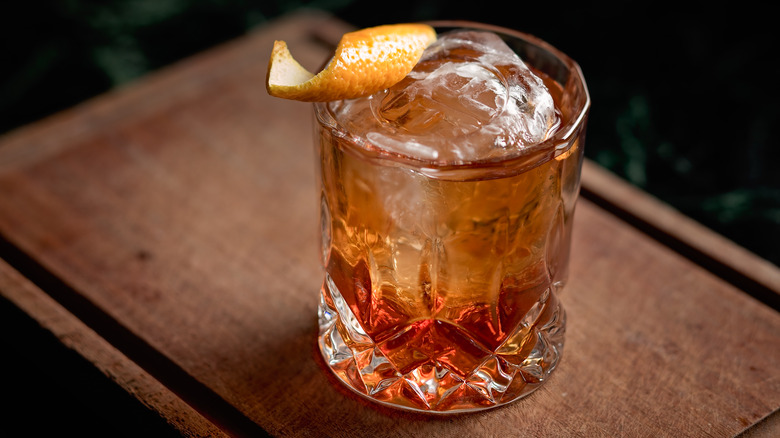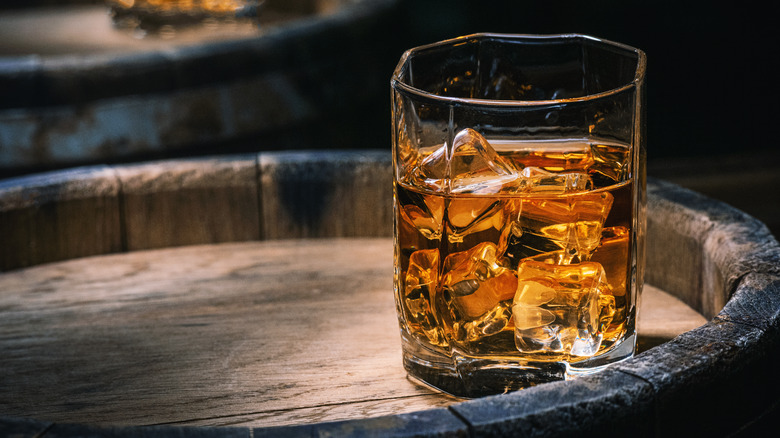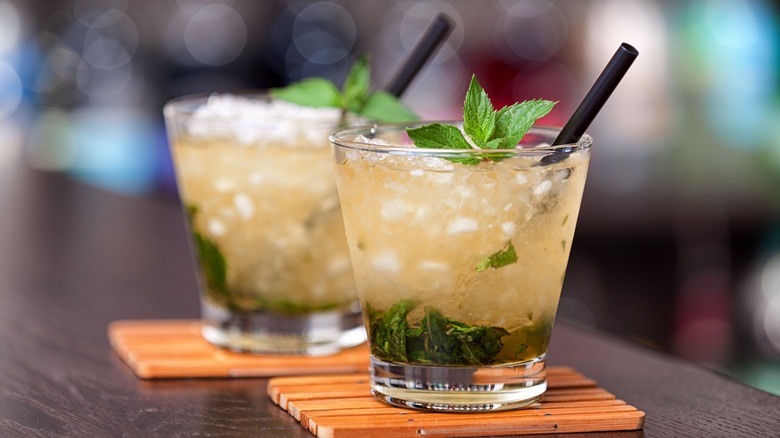Don't Be Fooled — The Shape Of Ice Greatly Affects Cocktails
Cocktails can contain a wonderful variety of ingredients, but ice, essential in so many mixed drink recipes, may be the most overlooked part of the equation. Woe to those who treat ice as an afterthought, for the size and shape of the ice cubes in cocktails can greatly impact the overall taste and mouthfeel of the drink. It's easy to understand why this is the case, as the specifications for cocktail ice are varied and confusing. Fortunately, there are general guidelines you can follow to keep your drinks chilled without watering them down.
Depending on how you categorize ice cubes, there are at least four or five different general shapes that are commonly used in cocktails. To make matters more complicated, the size of these cubes also significantly affects the drink. The right kind of ice depends on the nature of the cocktail. While you can often get away with using standard squares of ice for most drinks, a bolder, more-liquor forward concoction may call for a larger cube that will melt more slowly. On the other end of the spectrum, extravagant, fruity cocktails often pair nicely with crushed ice for a delightful, popsicle-like experience.
What are the different kinds of ice?
There's a good chance that the most basic type of ice cube is sitting inside your freezer right now: the one-by-one inch square, perfectly suitable for almost any home mixologist's cocktail. These cubes have enough surface area to resist melting too quickly, chilling and diluting the drink just enough to round out the flavor. The other types of ice found in home freezers, such as the crescent or cylinder pieces that machines automatically produce, unfortunately melt faster, break apart more easily, and just don't compare to the classic squares.
Smaller square cubes are also great to place in a shaker and mix around, but some cocktails require a gentle pour-over. For these types of drinks — often those heavier on the combination of spirits and bitters, like an Old Fashioned or a Manhattan — a larger, single two-by-two inch cube will melt more slowly and preserve the delicate flavor notes. Spheres of ice play a similar role, except they arguably look a bit cooler in a lowball glass. Collins spears — showy ice molds that resemble sticks — can be placed vertically in a highball glass, if that's the vessel you choose for your drink. Alternatively, crushed ice comes into play when a drink needs more dilution, such as with a spicy Moscow mule or a refreshing mint julep.
It's all about the dilution
The impact of ice shape all comes down to dilution. The larger the ratio of surface area to mass the ice has, the faster it will melt, and thus, the quicker it will water down your drink. That's not always a bad thing, but it is an important factor to keep in mind when deciding what types of ice to use. It's also why it's usually preferable for ice to melt evenly and slowly, rather than breaking apart, which affects the rate of dilution.
Dilution doesn't necessarily mean a watered down drink, though. In many cases, some dilution is necessary to balance out specific flavors or aroma, so one type doesn't overpower the other. That's why it's more important to have control over how fast ice melts in a cocktail than it is to simply slow down the melting process. For instance, pouring whiskey over a large cube or sphere ensures that you can slowly savor your beverage, especially if it's an expensive one. Conversely, crushed ice in a mint julep will quickly bring your drink to a slushie-like consistency for maximum refreshment. The best way to understand all this is through trial and error. Nothing will teach you what the best type of ice is better than becoming your own bartender.



